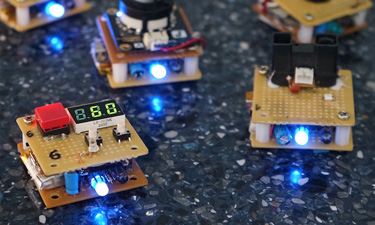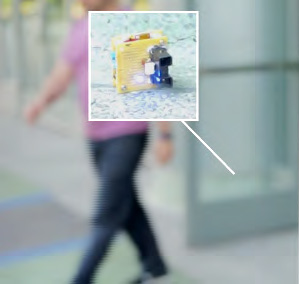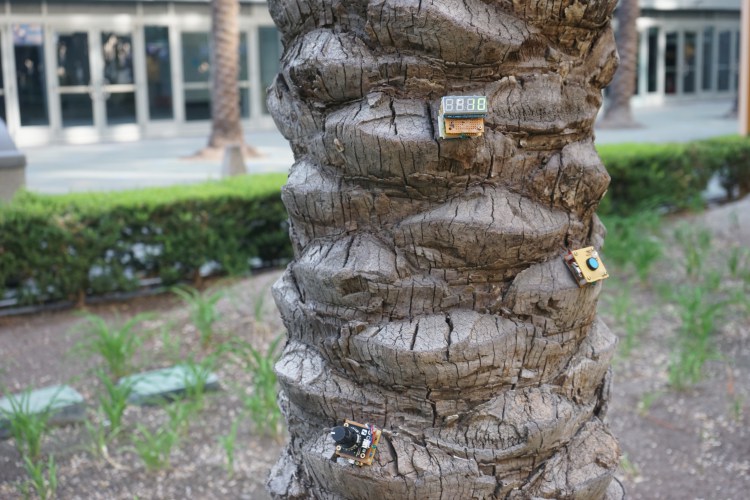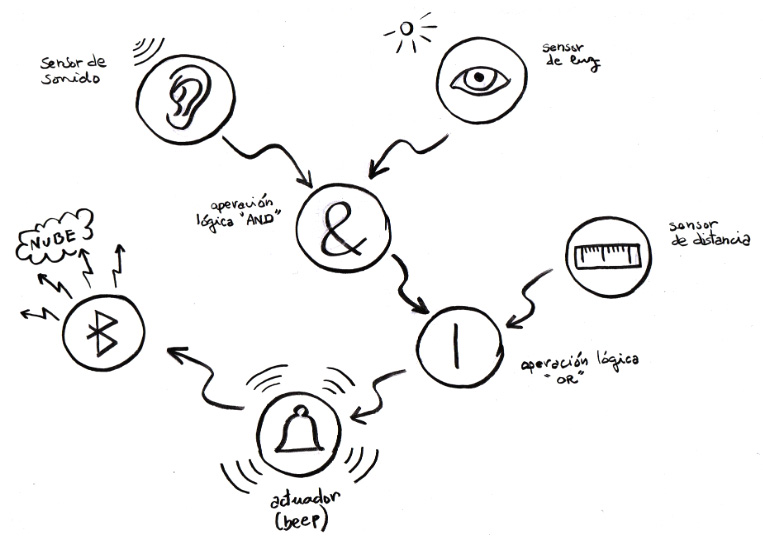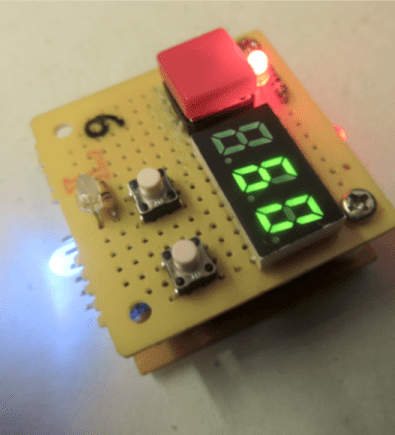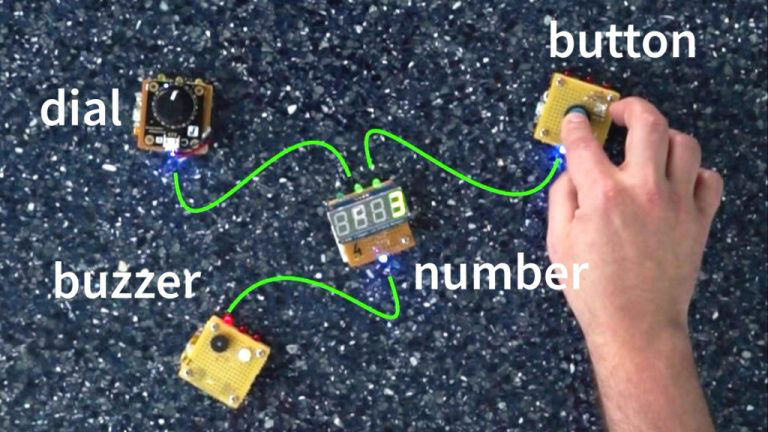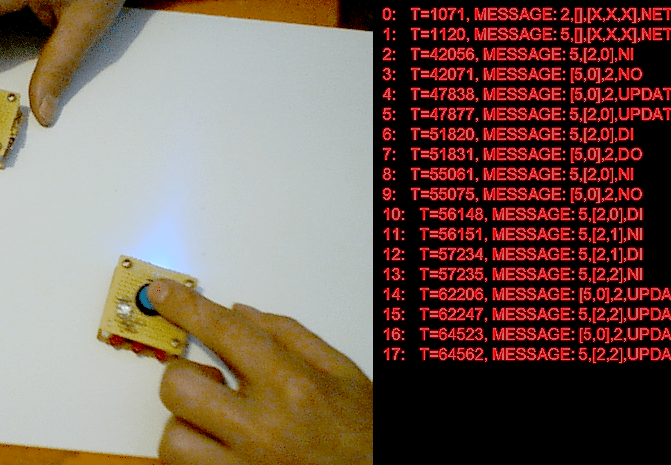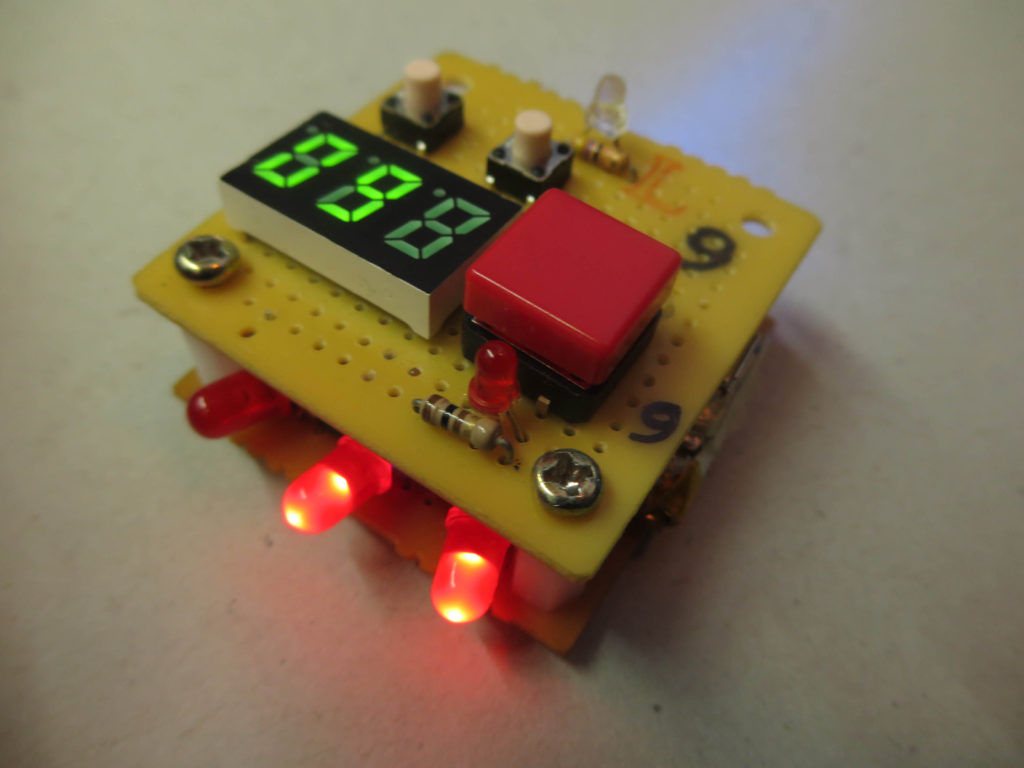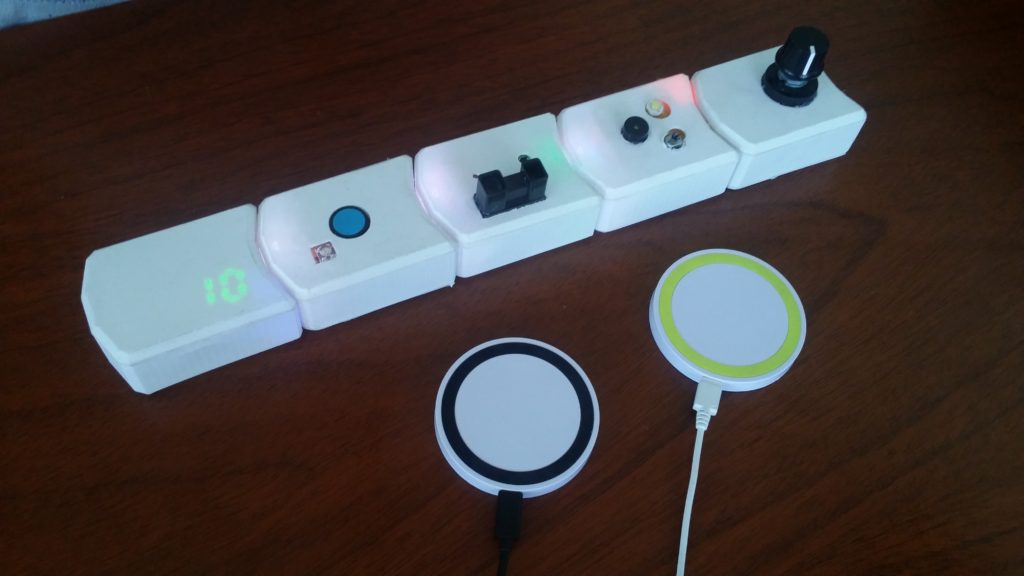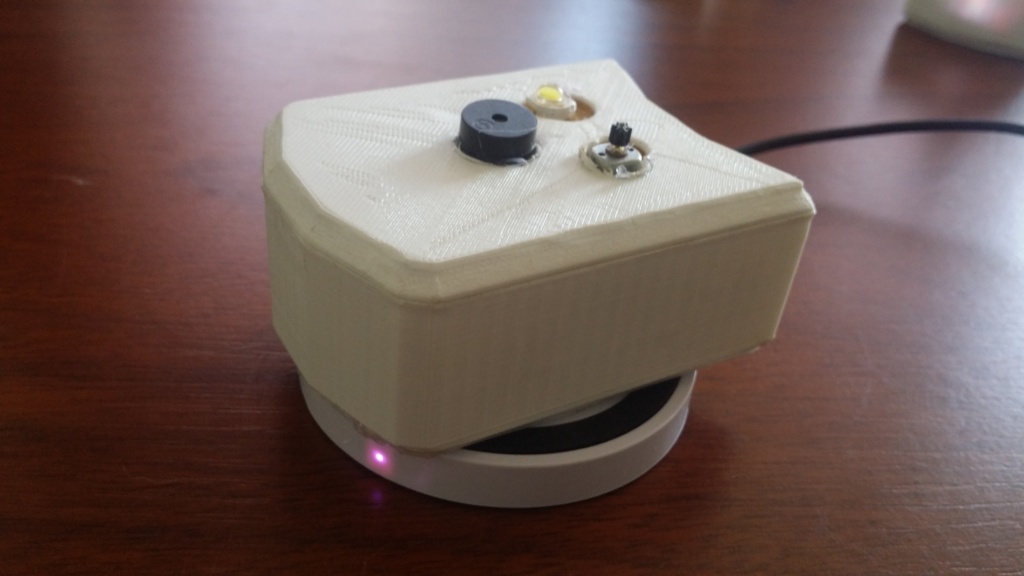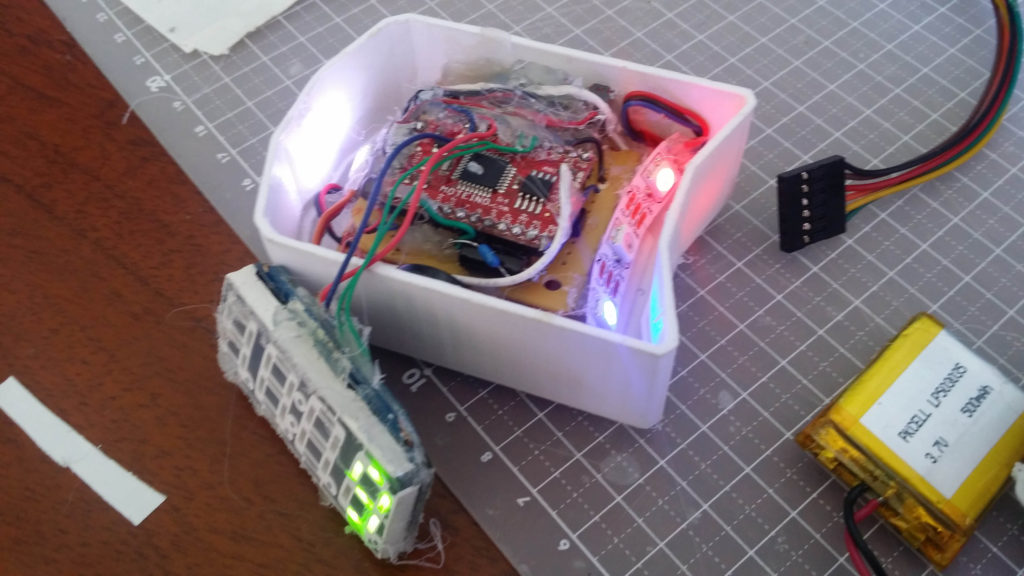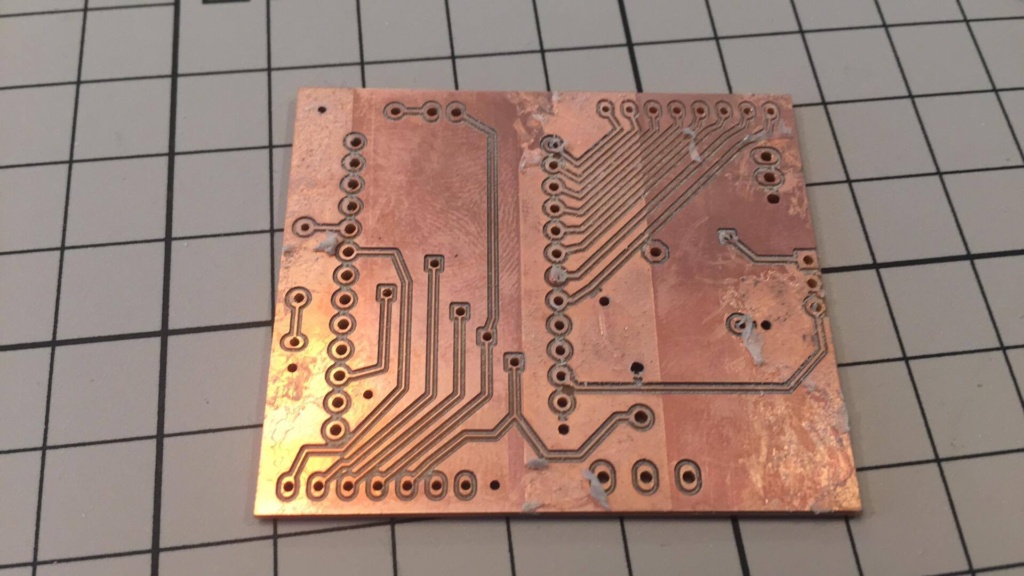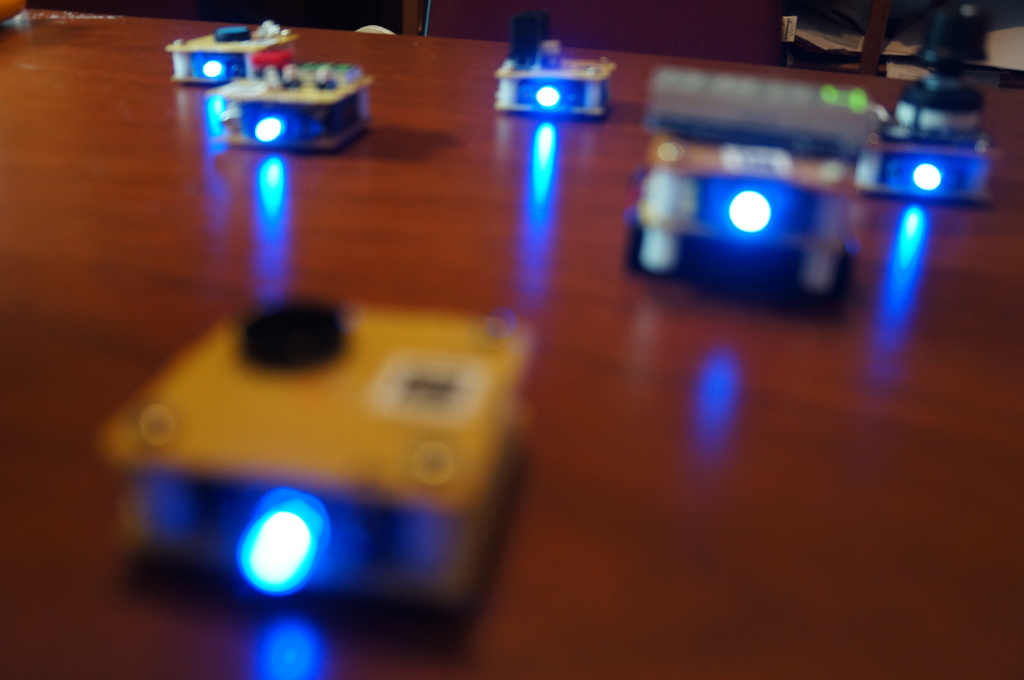Latest hardware improvements on transceivers supporting Low Power Wide Area Networks (LP-WAN) make it feasible to connect small battery powered devices hundred (or even thousands) of meters apart. We propose a physical computing paradigm fully exploiting this novel technology dubbed Spatial Physical Computing (SPC).
An SPC system leverages not only natural manipulation typically used on TUI and construction kits, but also integrates the necessary wandering (around a building or a city) in the process of creating, testing and tuning a public distributed smart sensor/actuator network.
The overall system is a compound of (an unlimited) set of independent data-processing nodes supporting an event-driven data-flow programming scheme. Module-to-module connection is first established by bringing the modules in physical contact (in fact the connection is established using a short range IR transceiver; the infrared emission diffuses in the contact between the plastic shells). From that moment on, the modules communicate using LPWAN (LoRA) up to thousands of meters. We demonstrated how such networks can be deployed – i.e. spatially programmed – through intuitive physical gestures, and studied the unique qualities and challenges of Spatial Physical Computing.
In parallel, we are exploring two different Augmented Reality solutions to the problem of network monitoring. The first is useful when studying a system over a table, before deployment: it consists of projecting the invisible links between the modules and graphically represent the flow of the data (similar to the ReacTable). Alternatively, if we need to monitor a network already deployed in space, we can use fiducial trackers or other 3D tracking alternatives and highlight the links as virtual patch-cords or bezier curves floating in space.
The fact that the modules need to be brought together to create a connection is an important feature for educational purposes (collaboration, discussion). On the other hand, the long range wireless interconnection enables sharing of the distributed sensor/actuator network in a neighbourhood, a small town or in the countryside (at any time one can connect to an already deployed and possible fixed module by just approaching another module).
Because of the expected miniaturisation and cost fall of its electronic components, those modules could be shared and exchanged by all, and function as a pervasive physical computing resource or currency capable of creating and sustaining – bottom-up – the infrastructure of a smart city.
- Data Flow, Spatial Physical Computing, Alvaro Cassinelli and Daniel Saakes. In TEI ’17. 2017. [doi] [bib]
- White paper (initial proposition and report for CEIBAL).
- Software repositories
